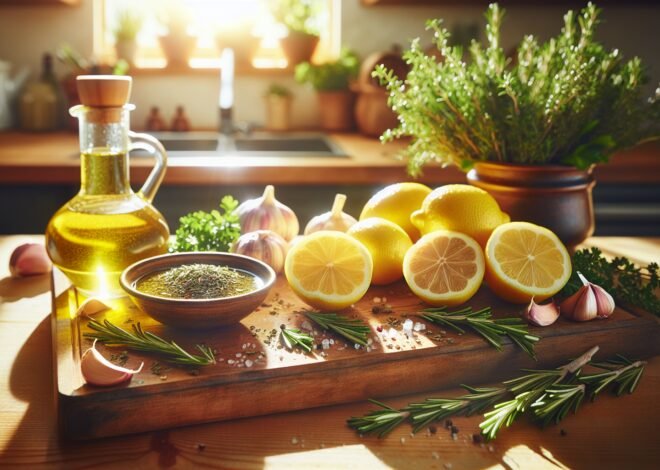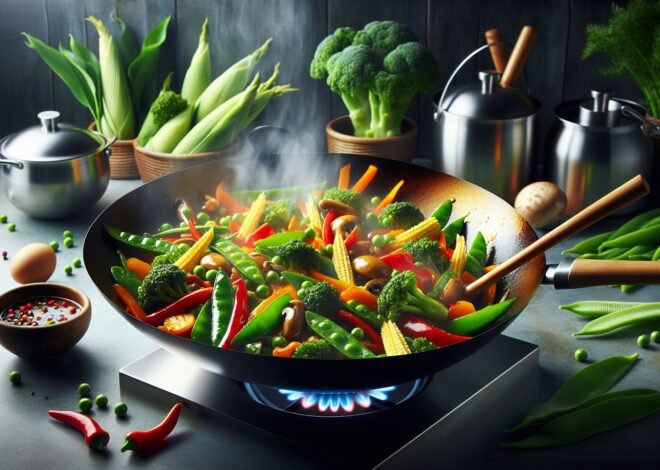
Best Seasoning Tips for Meat and Poultry
Meat and poultry need the right seasoning to bring out their best flavors. In this guide, we’ll share expert tips on how to season different types of meat and poultry for maximum taste, including marinades, rubs, and cooking techniques that will elevate your dishes.
Preparing Meat and Poultry for Seasoning
Before seasoning meat and poultry, proper preparation is key. This step ensures that flavors are absorbed well, enhancing the taste and texture of the final dish. Attention to detail during preparation makes a noticeable difference in your culinary results.
Cleaning and Drying the Meat
Cleaning meat is about ensuring it is free from any unwanted residue. Rinsing it under cold water helps remove surface blood and bacteria. However, it’s essential to dry the meat thoroughly afterward. Patting it with paper towels ensures a moisture-free surface, which is crucial for even seasoning.
Moisture on the meat’s surface can lead to steaming instead of searing, which affects flavor absorption. A dry surface allows seasonings to adhere better, creating a more intense flavor profile. This simple step is often overlooked but is essential for a successful seasoning regimen.
Trimming Fat for Better Seasoning
Trimming excess fat from meat is not just about health; it’s about enhancing flavor. Fat can act as a barrier, keeping seasonings from penetrating the meat. Removing or trimming down fat ensures that seasonings reach the meat more effectively.
Focus on trimming fat to a thin layer, especially on cuts like pork chops and steaks. This allows the remaining fat to render during cooking, adding flavor without blocking seasoning absorption. Proper trimming can transform the final taste and texture of your dish.
Letting Meat Reach Room Temperature
Allowing meat to reach room temperature before cooking is a critical step for even seasoning and cooking. Cold meat can lead to uneven cooking, with the exterior overcooked while the interior remains underdone. By letting the meat sit at room temperature, you ensure even heat distribution.
Typically, you should let meat sit out for about 30 minutes before cooking. This practice not only aids in seasoning absorption but also enhances the final texture and juiciness of the meat. It’s a small effort that yields significant improvements in your dish.
Best Seasoning Techniques for Meat
Choosing the right seasoning technique can elevate your meat dishes from simple to spectacular. Different methods like dry rubs or marinades offer distinct flavor profiles. Understanding these techniques helps in crafting a more personalized and enjoyable meal.
Dry Rubs vs Marinades
Dry rubs and marinades are two popular seasoning methods, each with unique benefits. Dry rubs, made from a blend of spices and herbs, are rubbed directly onto the meat’s surface. They create a flavorful crust and are ideal for meats that benefit from a smoky or spicy kick.
Marinades, on the other hand, involve soaking meat in a liquid mixture. This method tenderizes while adding moisture and flavor. Marinades are perfect for lean cuts that need a bit of extra juiciness. Choosing between the two largely depends on the cut and desired flavor intensity.
Using Salt as a Meat Tenderizer
Salt is more than a seasoning; it’s a natural tenderizer. Sprinkling salt on meat breaks down proteins, making it more tender. This process enhances flavor absorption, resulting in a more savory dish.
For best results, apply salt at least 40 minutes before cooking. This allows enough time for tenderizing effects without drawing out too much moisture. Salt can be used alone or as part of a spice blend, depending on your flavor goals.
When to Add Herbs and Spices
Timing is crucial when adding herbs and spices to meat. Fresh herbs are best added towards the end of cooking to preserve their vibrant flavors. Dried herbs and ground spices, however, should be added earlier to allow their flavors to fully develop.
Consider the cooking method and time when deciding when to add these elements. For slow-cooked dishes, early addition helps meld flavors, while quick-cooking techniques might benefit from a last-minute sprinkle. With the right timing, herbs and spices can significantly enhance your culinary creations.
Seasoning for Different Cooking Methods
The method of cooking influences how seasonings are applied and absorbed. Each cooking technique requires specific seasoning strategies to maximize flavor. Knowing how to adjust your seasoning approach ensures delicious results, regardless of your chosen method.
Grilling and Smoking Tips
Grilling and smoking impart unique flavors that complement well-seasoned meats. When grilling, use dry rubs to create a flavorful crust that stands up to high heat. For smoking, consider using a combination of salt, sugar, and spices to balance the intense smoky flavors.
Remember to let the meat rest after grilling or smoking. This resting period allows juices to redistribute, enhancing flavor and tenderness. Experiment with wood chips and rubs to explore different flavor profiles, tailoring them to suit your taste preferences.
Roasting and Baking Methods
Roasting and baking require a different seasoning strategy to ensure even flavor distribution. Use a marinade or a spice paste to coat the meat before cooking. This method ensures that flavors penetrate deeply, creating a rich and aromatic dish.
Basting during roasting can also enhance flavors, keeping the meat moist and flavorful. Consider the meat’s size and cut to determine the best seasoning approach, adjusting as needed for optimal results. A well-seasoned roast or bake can become the highlight of any meal.
Seasoning for Braising and Slow Cooking
Braising and slow cooking are ideal for developing deep flavors and tender textures. Begin by seasoning the meat generously with salt and spices. As the meat cooks slowly, these flavors intensify, creating a savory and satisfying result.
Add fresh herbs and aromatic vegetables to the cooking liquid for additional flavor layers. The long cooking time allows every ingredient to meld, resulting in a dish that’s rich and complex. Perfect seasoning transforms braised or slow-cooked meals into comforting and delicious experiences.
Conclusion
Proper seasoning is the foundation of delicious meat and poultry dishes. Whether using a dry rub, marinade, or simple salt and pepper, knowing when and how to apply seasoning ensures that every bite is flavorful. With these tips, you’ll be able to bring out the best in every cut of meat, creating dishes that are full of flavor and perfectly seasoned.
FAQ
Should I season meat before or after cooking?
Seasoning meat before cooking is generally recommended. Salt and spices enhance the natural flavors when they are absorbed into the meat during the cooking process. Applying seasoning in advance allows for better penetration and taste.
What is the best way to season chicken?
To season chicken effectively, start with a mix of salt, pepper, garlic powder, and paprika. For extra flavor, consider adding herbs such as rosemary, thyme, or oregano. Rubbing the seasoning directly onto the surface helps ensure even coverage.
How do I avoid overseasoning meat?
Use modest amounts of seasoning initially, as you can always add more after cooking. Taste-testing throughout the cooking process helps gauge the flavor. Balance is key; too much salt or spices can overpower the dish.
Should I marinate or dry rub meat?
The choice between marinating and dry rubbing depends on the type of meat and desired flavor. Marinades infuse meat with flavor and tenderize it, suitable for tough cuts. Dry rubs create a flavorful crust, ideal for grilling or smoking.
How do I season meat for grilling vs roasting?
For grilling, use a dry rub with bold spices like chili powder or cumin to create a crust. For roasting, marinate or use herbs to complement the slower cooking process and enhance tenderness.
How long should meat marinate for the best flavor?
Marinate meat for at least 30 minutes to several hours. For tougher cuts, longer marination up to 24 hours is beneficial. Always marinate meat in the refrigerator to maintain food safety.











